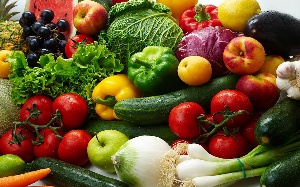The country could reap an estimated US$1billion from vegetable exports in the next six years with the expansion of Greenhouse villages in all parts of the country, President Nana Addo Dankwa Akufo-Addo has said.
He said pursuit of the ‘Greenhouse Village’ project, which aims at restructuring the vegetable sub-sector with the view to maximising production through the use of greenhouse technology, will benefit the country immensely; particularly as it “has the prospect of replacing imported vegetables with local vegetable produce”.
He noted that the concept of Greenhouse Villages was wholly embraced because of its potential benefits to actors along the vegetable value chain and economy as a whole.
The Greenhouse Village project signed between the government of Ghana and an Israeli company, Messrs. Agritop Limited, in 2015 is expected to see the construction of three Greenhouse Villages – with the option of adding another two upon completion at a cost of US$19.7million.
The project includes the construction of training centres and greenhouse tunnels – complete with automated drip irrigation facility, pack houses, cold storage, a maintenance yard, classrooms and dormitory accommodation for visiting resource persons. This is to be done on 5-hectare plots at Dawhenya, Akumadan and Bawjiase respectively.
It also includes building the capacity of 540 youth in Greenhouse Crop Production Technology. Provision is also made for 18 training sessions throughout the duration, with 30 students to be trained per session.
Speaking at the commissioning of Akumadan Greenhouse Capacity Building Centre and Commercial Units, the president envisaged that the experience gained from training in the Greenhouse Villages will impact the local market by taking over supplies to hotels, restaurants.
“The added benefit is that food-tourism will also receive a boost from the patronage of our local food produce, and thus enhance businesses and incomes.”
He said government will continue to collaborate with development partners to ensure hands-on training to expand vegetable production in Ghana. “We are also in talks with potential investors who have expressed interest to bring in capital and expertise for rapid acceleration of the sub-sectors growth.”
The president said government’s vision of modernising and transforming agriculture is fully on course, due to the introduction of innovative and strategic initiatives as well as the vital creation of a favourable environment for the sector.
He also called on Ghanaians to support the efforts of government to sustainably develop and modernise agriculture to play its expected role as a major catalyst for Ghana’s growth and prosperity.
So far, the first Centre constructed on the Dawhenya Irrigation Scheme has already trained 268 graduates, comprising 188 males and 80 females.
Out of the 268 trained, 51 were sent to Israel for a nine-month practical training to sharpen their skills and earn some income for the purchase of greenhouse kits, in order to establish their own greenhouses.
The returnees are expected to demonstrate their willingness and capacity to establish their own farms with some assistance from government. The second batch of 70 graduates from the Greenhouse Training Centre are currently in Israel undergoing similar training.
Attached to the new facility and the ones at Dawhenya and Bawjiase were Commercial units covering a total of 13,500 square metres. Of the said total area, each of the training centres has 4,500 square metres put under the cultivation of tomato, sweet-pepper and cucumber.
The annual output and corresponding value for the selected crops at the three facilities are projected as follows: tomatoes – 150 metric tonnes per hectare valued at GH¢843,150; sweet-pepper – 150 metric tonnes per hectare valued at GH¢837,000; and cucumber- 150 metric tonnes per hectare valued at GH¢810,000. This will amount to a market value of GH¢2,490,150.
The actual cropping area for the 90-hectare Greenhouse Village will actually be 81 hectares, because some 10 percent of the land area will cater for roads and other infrastructure in the village.
When fully cropped, based on a ratio of 2:2:1, it is projected that the 81 hectares will produce 4,860 metric tonnes of tomatoes, 3,888 metric tonnes of sweet pepper and 3,888 metric tonnes of cucumber. This translates into a total market value of GH¢150.2million per annum.
Click to view details



Business News of Sunday, 2 February 2020
Source: thebftonline.com







![Deputy Minority Leader, Emmanuel Armah-Kofi Buah [L] and First Lady Rebecca Akufo-Addo Deputy Minority Leader, Emmanuel Armah-Kofi Buah [L] and First Lady Rebecca Akufo-Addo](https://cdn.ghanaweb.com/imagelib/pics/114/11465182.295.jpg)









